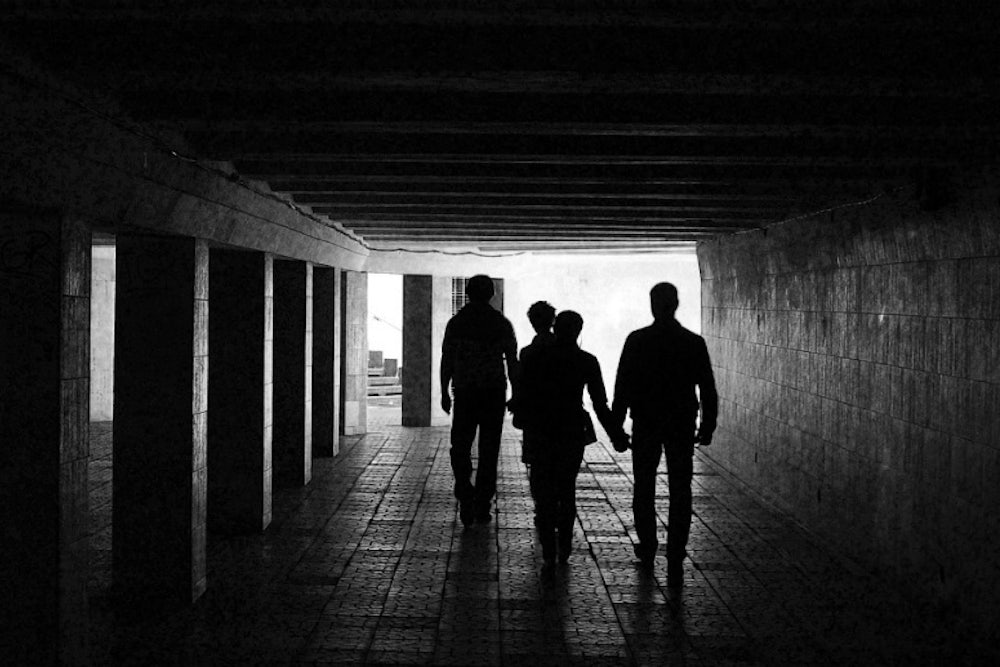The End of Days by Jenny Erpenbeck New Directions, 240 pp., $23.95
Old stories end “and they all lived happily ever after,” but of course they don’t really. The formula is a fig leaf to disguise the fact that all our stories end the same way: in death. Death is the limit of fiction, as it is the limit of life; it is the most pressing of subjects, the one that intimately concerns us all, yet it is also the one about which we have nothing useful to say. In the face of it, even the most sophisticated of minds is reduced to awestruck cliches. “Some death or other will eventually be her death,” Jenny Erpenbeck writes of her protagonist in The End of Days, her eerily powerful meditation on the ways a life can end. “If not sooner, then later. Some entrance will have to be for her. Every last person, every he and every she, has an entrance meant for him, for her. So does this underworld consist only of holes? Is there nothing more to it?....Is there nothing that could prevent a person from—sooner or later, here or there—stumbling right into it, flailing, falling, plummeting, sinking?”

If there is something childlike about these questions, it is not because they are easily answered, but because their unanswerability begins to plague us in childhood and never really goes away. Erpenbeck, a highly acclaimed German writer who is now becoming known in America, captures this primal quality through her dreamy montage-like narration: the book proceeds in a series of short numbered sections, frequently switching between points of view. Because the characters are never named, but referred to mainly by pronouns, the reader is left in a constant state of mild uncertainty, forced to deduce exactly who we are reading about.
And not just who, but when. As the book begins, it seems to be a story about a crib death in Brody, a border town in Austrian Galicia, around the beginning of the twentieth century. A baby girl stops breathing one night, and this seemingly gentlest of deaths does irreversible violence to the fabric of her parents’ lives, launching her father into emigration and her mother into prostitution. “A day on which a life comes to an end is still far from being the end of days,” Erpenbeck writes, yet that is also just what it is. When a person’s story comes to an end, and everyone connected to it is hurled into a new kind of future.
But then the book’s first section concludes, and in a brief “intermezzo” Erpenbeck rewinds it like an old videotape. What if the mother had had the presence of mind to take a handful of snow and put it on her baby’s chest, resuscitating her? Then everyone’s fate would have been different: the father would not have left and the family would have moved to Vienna, where a second sister would have been born. Yet when the next section of the novel begins, we find that this life, seemingly a happily-ever-after in which death was averted, only turns out to be the setting for a different kind of death. The girl, now grown to be a teenager, confronts the starvation of the post-war city and disappointment in love, which combine to lead to her a very different end of days.
But The End of Days has three more sections to go, and by now the reader has identified the pattern: in each section we will read of another way the same life might have ended. Each time the death comes with a different degree of horror or absurdity: homicide or suicide, accident or old age. Almost always politics is involved, and one of Erpenbeck’s achievements is to show the endless ways in which the twentieth century dictated individual fates through war and ideology. Since the protagonist is half-Jewish, the question of Jewishness and its legacies in twentieth-century Germany is never far from the surface. (The family’s set of the collected works of Goethe, which is damaged in a pogrom early in the book, resurfaces near the end in an antique shop, a living emblem of the career of German Jewry and its thwarted desire for belonging.)
Yet no matter how different the setting of her alternative existences—the novel shifts from Poland to Austria to Russia to East Germany—the lives the woman leads turn out to be variations on the same themes. Autonomy, Erpenbeck suggests, is an illusion. The lives we lead are actually permutations of history and chance, and they all end the same way, in an unnarratable death. But by imagining these different fates so meticulously, The End of Days suggests that we do have at least one kind of power over them—the power of imagination, which turns one existence into many, and gives us at least the illusion of having understood them all.
